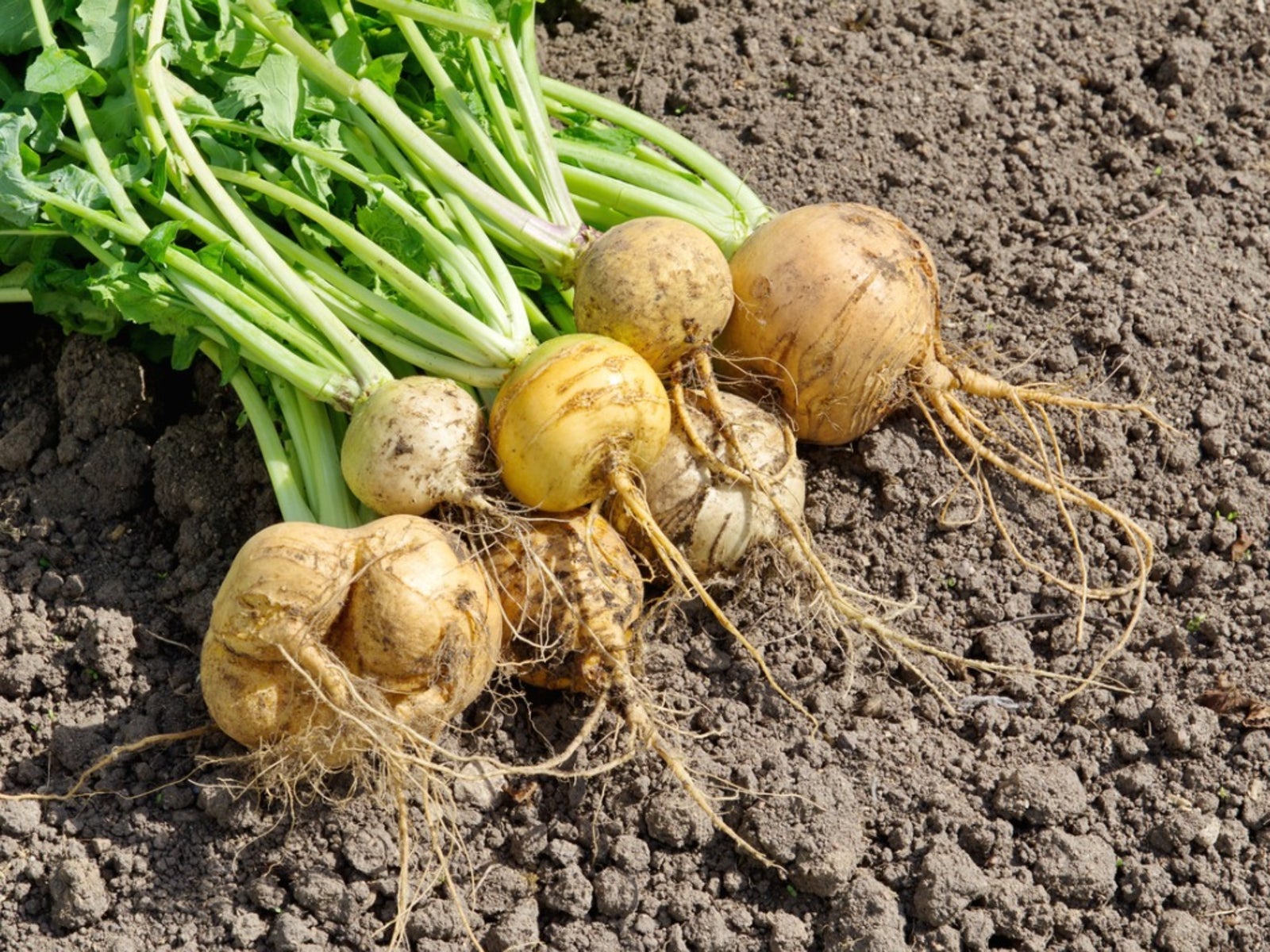Harvesting A Turnip Root: How And When To Harvest Turnips


Turnips are a root vegetable that grow quickly and are ready for harvest in as little as two months. There are many varieties to choose from and each has a slightly different mature date. When are turnips ready for picking? You can pull them at several stages of growth. When to harvest turnips depends upon whether you prefer the robust, large bulbs or the tender, sweet young roots.
When to Harvest Turnips
There are different methods for harvesting and storing turnips. Some are pulled and bunched together with the leaves and stems intact. These are best taken when they are 2 inches (5 cm.) in diameter. Those that are topped, which means the greens are removed, are harvested when 3 inches (8 cm.) in diameter. The actual time for harvesting a turnip root is determined by the variety and your growing conditions. Plants that grow in less than ideal conditions will take longer to mature. If you are harvesting turnip greens, this will also slow the production of the root and they will take longer before harvest.
When are Turnips Ready for Picking?
Maturation from seed varies from 28 to 75 days. The larger varieties take longer to reach full size. You can also take them when they are small for a sweeter, milder flavor. Turnips are seeded in spring or fall, but the fall crops need to be harvested before heavy freezes. However, they do seem to have a sweeter flavor when exposed to mild frost. Your turnip harvest should all be pulled before heavy freezes or the root may crack and rot in the soil. Turnips keep very well in cold storage, so pull the entire crop by late fall. In temperate zones, the turnip harvest is kept in the ground longer by piling mulch around the plants to protect the roots from freezing.
Turnip Greens
Turnip greens are nutritious, versatile vegetables. You can harvest them from any variety of turnip but this will impede production of the root. There are varieties of turnip that produce large heads of greens and are sown just for harvesting turnip greens. Only cut the greens once if you want a turnip harvest of roots. When you cut the leaves, you reduce the plant's ability to harvest solar energy for food to fuel the growth of the root. Shogoin is an excellent cultivar that you can grow just for the greens and harvest numerous times by the “cut and come again” method.
Storage of Harvested Turnips
After harvesting a turnip root, cut the greens off and store in a cool spot. The ideal temperature is 32 to 35 degrees F. (0-2 C.), which makes the refrigerator an excellent place to keep the roots. If you have a large turnip harvest, put them in a box lined with straw in a cool cellar or garage. Make sure the location is dry or the roots will get moldy spots. They should keep for several months, just like onions and potatoes, if humidity levels are less than 90 percent. If you were not sure when to harvest turnips and got a crop of woody roots, peel them and stew for more tender vegetables.
Sign up for the Gardening Know How newsletter today and receive a free copy of our e-book "How to Grow Delicious Tomatoes".

Bonnie Grant is a professional landscaper with a Certification in Urban Gardening. She has been gardening and writing for 15 years. A former professional chef, she has a passion for edible landscaping.